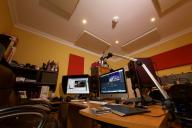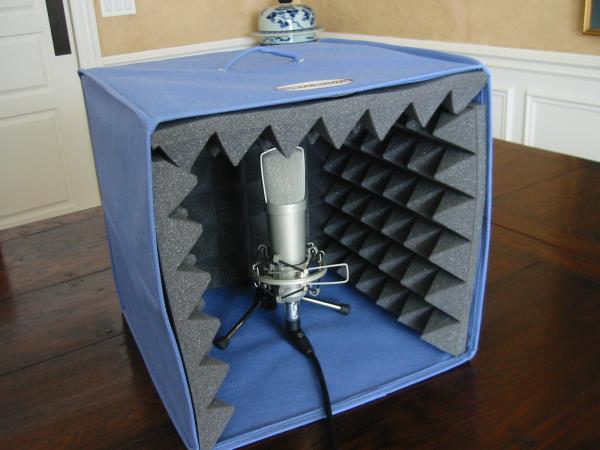
It allows to keep PV going, with more focus towards AI, but keeping be one of the few truly independent places.
-
Recently we've done a fair few voice overs. Its easier if you have your NLE and voice together in the same room as you iterate over the work.
We generally use Logic Pro X and a Rode NT1A/Audient iD22 for voice. We use FCPx to show the sequence so that the voice can synchronise. We been using a booth cobbled together from two foldable acoustic panels and a SE Reflection Filter X to cut down on the room reflections.
The more I've worked at my desk the more aware I've really become of the limitations of the sound quality. I'd recently read an article about sound absorbers.
RPG Europe's Absorbor come out tops, so I ordered seven panels to give us more options, four for the ceiling and three for the walls.
In essence they've made a great difference, and working with sound is even more of a pleasure.
More here: http://wbavproductions.co.uk/resources/absorbor.html

 IMG_9749.jpg1024 x 683 - 189K
IMG_9749.jpg1024 x 683 - 189K -
Actually it requires different materials and measures.
-
another idea, for recording , also portable.... Variations on the Portabooth...
http://voiceoveressentials.com/content/portaboothArticle.htm


 portaboothFullFront.jpg600 x 450 - 39K
portaboothFullFront.jpg600 x 450 - 39K -
@Jleo Thats helpful! My next project is to shutdown the noise from my RAID arrays. I'll probably use some similar materials along with some stuff called DedSheete.
-
You can go long ways with a good dynamic mic with good front projection, like the sure sm7b , but to get the best sound you always need to treat your room , mainly base traps in corners and high frequency damping panels at reflection points
-
You can always try and record inside of your closet filled with clothes also works if your on a budget or if you're not that DIY-handy. With some basic knowledge about audio mixing, you can achieve a pretty well sounding voice-over or any other vocal recording.
Howdy, Stranger!
It looks like you're new here. If you want to get involved, click one of these buttons!
Categories
- Topics List23,992
- Blog5,725
- General and News1,354
- Hacks and Patches1,153
- ↳ Top Settings33
- ↳ Beginners256
- ↳ Archives402
- ↳ Hacks News and Development56
- Cameras2,367
- ↳ Panasonic995
- ↳ Canon118
- ↳ Sony156
- ↳ Nikon96
- ↳ Pentax and Samsung70
- ↳ Olympus and Fujifilm101
- ↳ Compacts and Camcorders300
- ↳ Smartphones for video97
- ↳ Pro Video Cameras191
- ↳ BlackMagic and other raw cameras116
- Skill1,960
- ↳ Business and distribution66
- ↳ Preparation, scripts and legal38
- ↳ Art149
- ↳ Import, Convert, Exporting291
- ↳ Editors191
- ↳ Effects and stunts115
- ↳ Color grading197
- ↳ Sound and Music280
- ↳ Lighting96
- ↳ Software and storage tips266
- Gear5,420
- ↳ Filters, Adapters, Matte boxes344
- ↳ Lenses1,582
- ↳ Follow focus and gears93
- ↳ Sound499
- ↳ Lighting gear314
- ↳ Camera movement230
- ↳ Gimbals and copters302
- ↳ Rigs and related stuff273
- ↳ Power solutions83
- ↳ Monitors and viewfinders340
- ↳ Tripods and fluid heads139
- ↳ Storage286
- ↳ Computers and studio gear560
- ↳ VR and 3D248
- Showcase1,859
- Marketplace2,834
- Offtopic1,320






